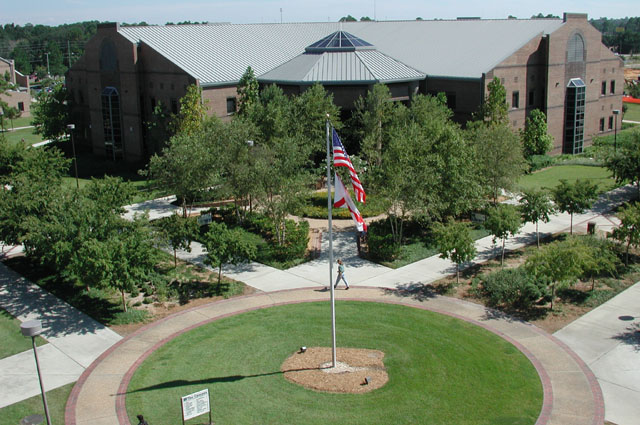Last week I wrote about education in community colleges in general, as an introduction to President Obama's proposal for providing free tuition for community college students. At the time, only the idea had been introduced, with the promise that the President would announce the specifics in his State of the Union address last Tuesday. I concluded last week's blog by saying that this week I would dig deeper into the details, look at minuses and pluses of the program, and update you on any recent developments.
Instead of the President going into the details of his proposal during the State of the Union address, the White House announced some likelihoods of the program prior to Tuesday night. Currently, we have only a few of the specifics, and this week I will write about: what I do know about the proposal; the need for more particulars; arguments in favor of, and in opposition to, the proposal; and an alternative proposal.
First of all, let's concentrate on the details.
• The program would provide tuition-free education for community college students who maintain a 2.5 grade point average (c+) and who make consistent progress toward graduation--whether working for a certificate or degree in occupational training programs leading to employment or an associate degree that is transferable to a four-year college.
• The cost is estimated at about $60 billion over ten years, with the federal government bearing three-fourths of the cost and the states and local entities paying the remainder.
• The federal money would come by increasing the capital-gains and dividends tax rates for high-income households, closing a trust-fund loophole, and charging a fee to financial firms that borrow heavily.
• The proposal also calls for streamlining Coverdell education-saving programs and the 529 savings plans, which are difficult for students and their families to understand.
• And the proposal would extend the Hope tax credit to students enrolled less than half time.
The details of this proposal are very complicated. In my opinion, it would be imprudent for the U.S. Congress to pass this bill before all the specifics of the program are clearly spelled out, which would include a precise line-by-line budget and reasonable safeguards for the budget to be adhered to. We know that government spending always seems to run amok, and we remember Nancy Pelosi's famous words about first passing the Affordable Care Act (Obamacare) and learning about the details later.
Let's look at some of the arguments for and against the proposal, first turning to what people in favor of the program are saying.
• This program would send a clear message to everyone that community college is an affordable option for higher education and could induce more high-school students to prepare for, and enroll in, college.
• This program would possibly encourage more students to attend community colleges instead of the more expensive for-profit colleges, thus reducing their debt burden.
• Four-year degrees would be more affordable by attending community colleges for the first two years and transferring to a four year college for the last two years. This is significant because having more people highly educated would: make for a much larger and better qualified workforce, bring new industry to the United States, create many new jobs, and generate more revenues than the costs of funding such a program.
• The proposal would help middle-income families who make too much money to qualify for Pell Grants but do not make enough money to pay for the total cost of a college education.
• Because so many students who attend community colleges work full-time jobs, covering the tuition for part-time students in addition to full-timers would make it possible for more students to attend college.
• If students are allowed to use Pell Grants to defray college expenses other than tuition, as many White House officials suggest it will, it would be a huge bonanza for college students. Tuition is only a small portion of the total cost of attending college, and most colleges have "tuition" grants available for students with limited financial means, making it possible for the Pell Grant to be used for other college expenses.
Here are some of the comments from those who oppose the proposed program.
• There is too much emphasis on the need for everyone to attend college, thus degrading people who just do not have the disposition or temperament to attend college. There are many respected vocational positions that do not require education beyond high school.
• Tuition is already free for most poor and working-class students, who qualify for federal Pell Grants and tuition grants from the college they are attending.
• If we are going to fund the first two years of college tuition, such funding should not be restricted to community colleges; it should also be used for the first two years of tuition for four-year colleges. The drop-out rate at community colleges is a tragic 82% (on average, only 18% graduate). If students plan to transfer to four-year colleges, it is a mistake to encourage them to initially go to community colleges, where they are much less likely to graduate; it makes more sense to attend four-year colleges in the first place.
• Transferring credits from a community college to a four-year college sounds easy, but in real life it can be a nightmare.
• This program broadens the country's welfare program, which encourages people to depend on the government, rather than promoting hard work, long-range planning, sacrifice, and self-reliance--attributes that have long been hallmarks leading to success. At the least, if the program is adopted, students participating in such a program should be required to commit to a one- or two-year service project in the community, military service, or an equivalent.
• No one has provided solid information to suggest that the program would be helpful for education over the long haul.
• Once federal programs get started, they historically grow in size and cost far, far beyond what was originally forecast.
From what I have been able to learn about the President's proposal, although it has some attractive components, the arguments against the program outweigh those for it.
Writing in The New York Times (January 19, 2015), David Brooks offers an alternative program that deserves looking at. He suggests that the problem is not getting students to enroll in community colleges, but helping them to graduate. He proposes that, if the money is going to be spent, it should be used to: subsidize counselors, tutors, and mentors; provide better remedial programs (all college teachers agree that a substantial number of their students are not prepared for college work, and that this is especially true of students attending community college); and to provide more and consistent support services such as child care.
"In short," writes Brooks, "you wouldn't write government checks for tuition. You'd strengthen structure around the schools."
(Sources for this column are: various articles in recent issues of The Chronicle of Higher Education and The New York Times, numerous reports of the U.S. Department of Education, and personal knowledge gained from being involved in higher education as a teacher and administrator for many years.)
www.huffingtonpost.com/william-b-bradshaw/free-tuition-for-communit_b_6537188.html
explore in depth on
Google News - 116 articles
 By WeatherBug Chief Meteorologist, Mark Hoekzema
By WeatherBug Chief Meteorologist, Mark Hoekzema That`s because meteorologists observe seasons over different time periods. Meteorological spring began March 1st, summer begins June 1st, fall begins on September 1st and winter begins on December 1st.
That`s because meteorologists observe seasons over different time periods. Meteorological spring began March 1st, summer begins June 1st, fall begins on September 1st and winter begins on December 1st. A second reason is that weather-wise, it makes more sense around the globe. In spring, mild surges of air from the south are becoming a regular occurrence and severe weather threats begin to kick in by March 1. The heat of summer has been experienced in most areas across the country by June 1 and the heat of summer is waning by September 1st.
A second reason is that weather-wise, it makes more sense around the globe. In spring, mild surges of air from the south are becoming a regular occurrence and severe weather threats begin to kick in by March 1. The heat of summer has been experienced in most areas across the country by June 1 and the heat of summer is waning by September 1st.


















